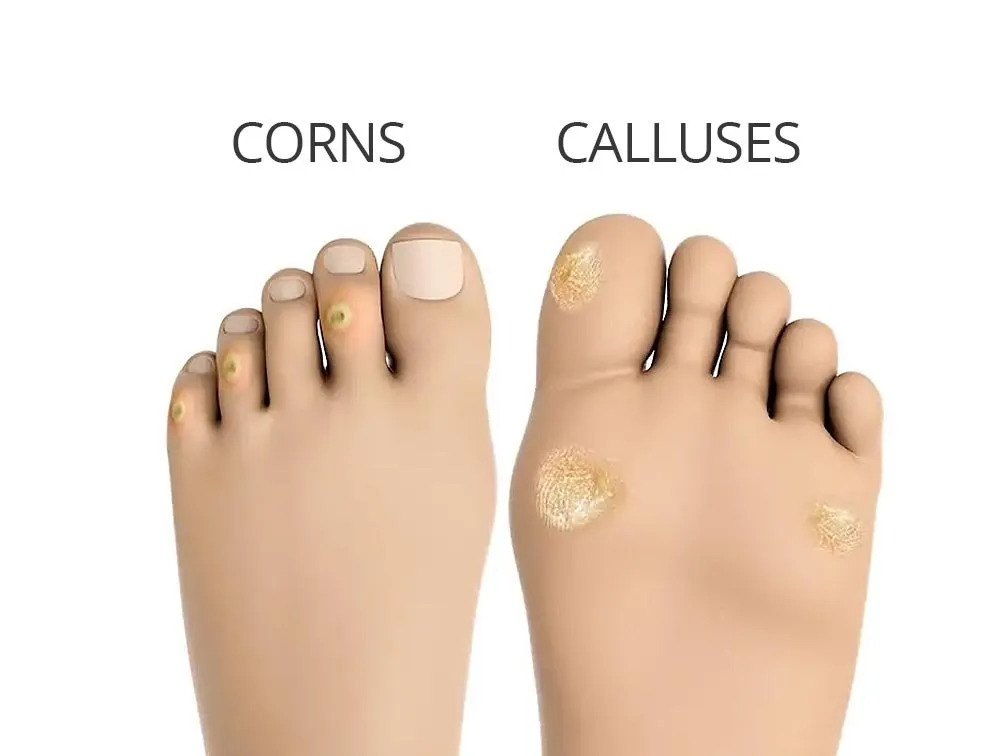WARTS,
CORNS
&
CALLUSES

Calluses & Corns
How do they form?
Mostly due to improper footwear- ill-fitting tight shoes and high heels squeeze the feet, loose shoes will repeatedly slide and rub against the stitches of the shoe
One shouldn’t wear shoes without socks – Results in friction
Genetics also play role- Keratosis punctata
Abnormal bony foot structure
Abnormal gait
Patients with Diabetes mellitus
Vascular insufficiency
Warts
warts are of Genital and non genital type. Genital being transmitted sexually by Human papilloma virus.
Warts are extra growths of skin that can occur anywhere on the body
Common warts are highly contagious, that is contagious by touch. It takes nearly 2 – 6 months for a wart to form after contracting the virus. Warts are often self limiting also.
How do they appear?
– Small, fleshy bumps
– Small pin points black in color due to clotted blood vessels
– Round in shape, pink in color coalescing to form larger ones
– Extending into nails
Calluses may not hurt but corns are painful
Calluses are thick round pad of horny material mostly appears on the pressure points – soles or toes. They are often larger than Corns.
Corns – These are smaller than calluses with a hard centre surrounded by swollen skin. These are situated much deeper too. Hard ones form on the top of the toes, whereas soft corns tend to form between the toe web spaces.
Dermatologist Recommended
U need to visit the doctor when they are painful or bothersome aesthetically and as they spread easily
Children are at risk because there immune system is not yet built up to fight the virus
Immunodeficient Patients suffering with HIV or underwent Organ transplantation
How to Prevent warts
– Avoid using common washrooms, cleanse properly after using them incase
– Avoid touching or picking the warts thereby preventing from getting on multiple sites
– Don’t bite your fingernails, Injuries around finger nail invite the virus easily
– Advised not to brush, clip or shave areas that have warts. Use electric shaver incase
How to prevent them?
Wear shoes of the right size –
If you can’t wiggle your toes, then your shoes are tight.
Shop for the shoes usually at the end of the day, when your feet are most swollen
Use protective coverings-
Wear corn pads, bandages, felt pads over the areas which rub against your footwear. You may also try toe separators or some lamb’s wool between the toes
Wear padded gloves while using hand instruments like Violin – Or try taping the area
Treatment options
– Cautery is the mainstay
– Topical applications may work sometimes
– Cryotherapy
– Autoinoculation- Helpful if they are multiple in number and usually in children
